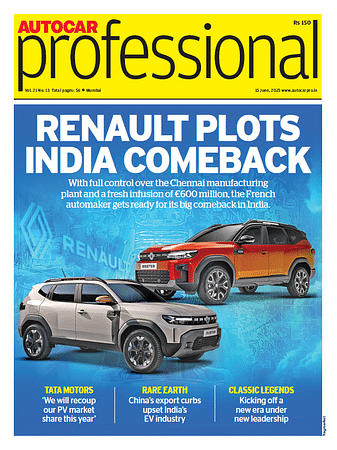Daimler Trucks N America’s SuperTruck Study wins US energy award
Daimler Trucks North America (DTNA) has received the ‘Distinguished Achievement Award’ of the U.S. Department of Energy for DTNA’s SuperTruck Study.
Daimler Trucks North America (DTNA) has received the ‘Distinguished Achievement Award’ of the U.S. Department of Energy for its SuperTruck Study.
The SuperTruck Study shows ways in which the road goods transport of the future can be made as environmentally compatible and fuel-efficient as possible. It also showed that certain efficiency measures are technologically possible, but they do not make sense economically from today’s perspective.
DTNA initiated the 5-year SuperTruck Study in 2010, and received subsidies amounting to 40 million US dollars from the U.S. Department of Energy for this R&D undertaking. The aim of the Department was to increase the transport efficiency of trucks in U.S. class 8 by 50 percent. Daimler managed to exceed this figure significantly.
The SuperTruck improves transport efficiency by 115 percent (measured in ton-miles per gallon) compared to a 2009 baseline truck used for comparison. The fuel consumption of the SuperTruck is also outstanding. On test drives the truck consumed an average of around 19 litres per 100 kilometers with a gross vehicle weight of 29.5 tonnes and at a speed of around 100kph. In this weight category regular consumption to date has been around the 39 litre mark.
The Freightliner SuperTruck demonstrates how fuel consumption can be further reduced by means of specific aerodynamic and energy management measures, plus the use of an intelligent powertrain and other actuators. The SuperTruck is for example equipped with the Detroit DT12 automated transmission and predictive technology which uses GPS and digital 3D maps to control the vehicle speed.
The results of the study relating to aerodynamics and the powertrain have been incorporated into the series production models Freightliner Cascadia Evolution and Western Star 5700 XE. One in four Freightliner Cascadia Evolution trucks are equipped with the automated Detroit DT12 transmission.
While these optimizations are feasible for customer use, the SuperTruck study also shows that for example ultralight materials are not economically viable at this time. Although aluminium for the truck frame and carbon-fibre inside and outside the cab reduce the vehicle weight, they also incur higher material and production costs.
RELATED ARTICLES
Volvo Cars signs recycled steel supply pact with SSAB
The recycled steel will be used in selected components of the forthcoming, fully electric EX60 SUV, as well as other car...
Schaeffler and NVIDIA ink technology collaboration to advance digital manufacturing
Using NVIDIA Omniverse, Schaeffler is expanding its production elements, which will be integrated and simulated as digit...
BMW Group to industrialise Virtual Factory, slash production planning costs
What once required several weeks of real-world modifications and testing can now be precisely simulated in the BMW Group...





 By Autocar Professional Bureau
By Autocar Professional Bureau
 26 Jun 2015
26 Jun 2015
 3592 Views
3592 Views









